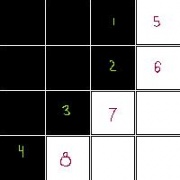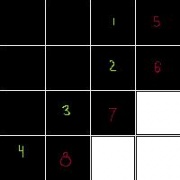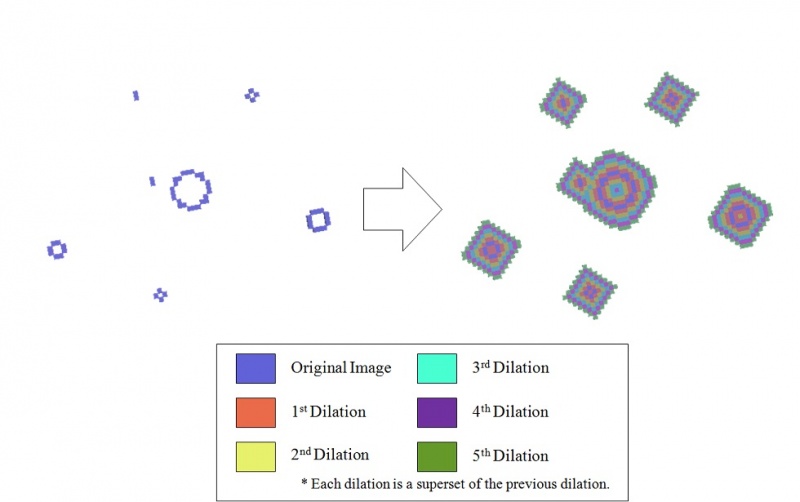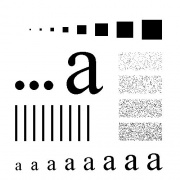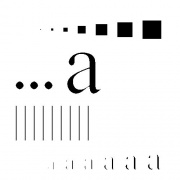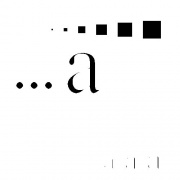This site is devoted to mathematics and its applications. Created and run by Peter Saveliev.
Dilation and erosion
From Mathematics Is A Science
Dilation is an operation that makes black each pixel adjacent to black. Erosion makes white each pixel adjacent to white. By adjacent pixel we understand one that shares an edge with the given pixel.
Alternatively, it may be a pixel that shares a vertex. In case of a single erosion or dilation the difference may be ignored because pixels are small. In case of multiple application of these operations using the distance function may be preferable (the n-th round turns all white pixels within n-pixel distance from the "seed", black.).
The effect of multiple erosions on a test image is illustrated below:
Thus, dilation and erosion expand and shrink objects in a binary image, respectively. In the context of this site, these operations may be used to reveal “large” features of the image. If a feature disappears after several applications of one of these operations, it is “small” and should be ignored. For example, an object may disappear after a few rounds of erosions. A hole or a tunnel may close after several dilations. Therefore, the number of times it takes to destroy a feature may serve as a measure of its importance. In computational topology, this number is commonly called the persistence of the feature, see Robustness of topology. Robustness of measurements is discussed under Robustness of geometry.
Erosion and dilation are two elementary examples of cellular automata. Unfortunately, after multiple dilations even a round figure will become more and more square. As a result, these operations can't be used for modeling physical processes. An alternative may be discrete exterior calculus.
Dilation and erosion are found in Pixcavator under Tools.
Digital discoveries
- Casinos Not On Gamstop
- Non Gamstop Casinos
- Casino Not On Gamstop
- Casino Not On Gamstop
- Non Gamstop Casinos UK
- Casino Sites Not On Gamstop
- Siti Non Aams
- Casino Online Non Aams
- Non Gamstop Casinos UK
- UK Casino Not On Gamstop
- Non Gamstop Casino UK
- UK Casinos Not On Gamstop
- UK Casino Not On Gamstop
- Non Gamstop Casino UK
- Non Gamstop Casinos
- Non Gamstop Casino Sites UK
- Best Non Gamstop Casinos
- Casino Sites Not On Gamstop
- Casino En Ligne Fiable
- UK Online Casinos Not On Gamstop
- Online Betting Sites UK
- Meilleur Site Casino En Ligne
- Migliori Casino Non Aams
- Best Non Gamstop Casino
- Crypto Casinos
- Meilleur Site Casino En Ligne Belgique
- Bookmaker Non Aams
- онлайн казино с хорошей отдачей
- スマホ カジノ 稼ぐ
- Trang Web Cá độ Bóng đá Của Việt Nam
